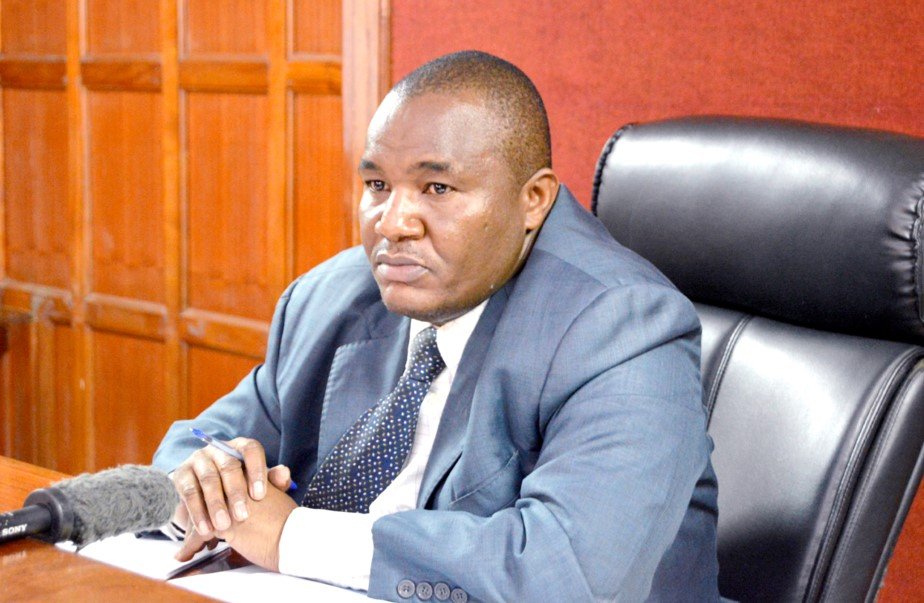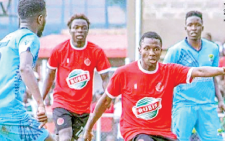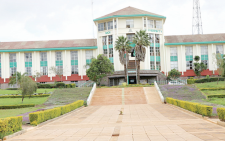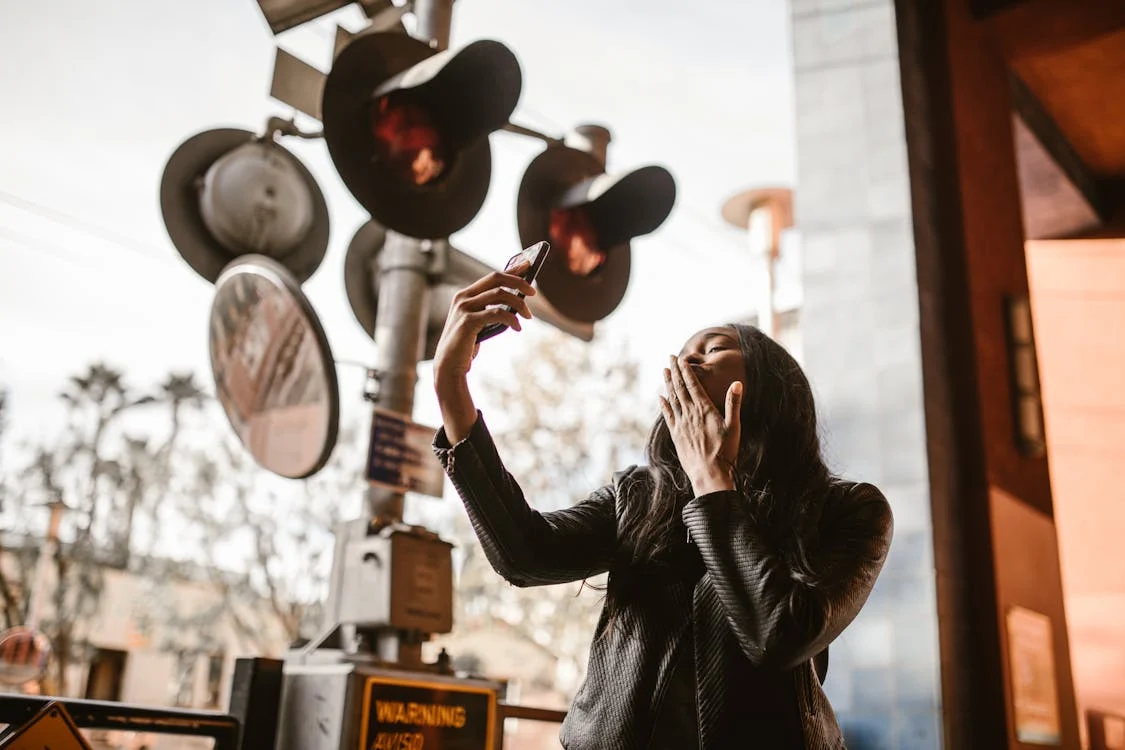New treatment for kala-azar spells renewed hope for patients
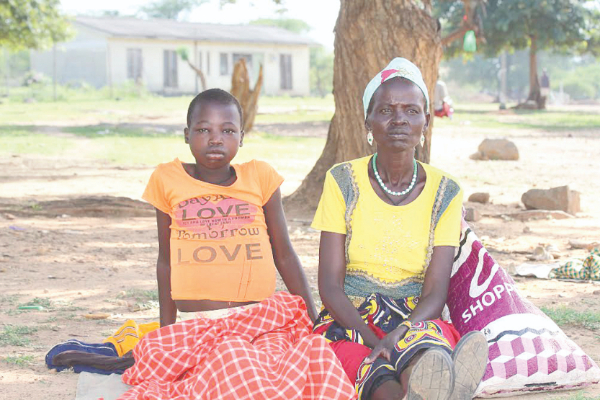
Sitting on grass outside Kacheliba Sub-County Hospital in West Pokot County, 10-year-old Tekla Chepkopus basks in the sun with her 42-year-old mother Grace Murareng.
Tekla is undergoing treatment for visceral leishmaniasis (VL) disease popularly known as kala-azar for the second time in five years. Going to school for the Class Four student at Katukumwok Primary School, has become unbearable because of pain and a distended abdomen.
Kala-azar is a life-threatening disease caused by Leishmania parasites which are transmitted by female sandflies. It is one of the most dangerous neglected tropical diseases (NTDs) and the second deadliest parasitic disease in the world after Malaria. It is endemic in 70 countries.
The parasite is spread to humans through the bite of infected female sand flies. Initially, leishmania parasites cause skin sores or ulcers at the site of the bite. If the disease progresses, it attacks the immune system.
The disease presents after two to eight months with more generalised symptoms, including prolonged fever and weakness, weight loss, and spleen and liver enlargement.
The first time Tekla fell ill, she was taken to a hospital in Eldoret, Uasin Gishu County. They tested her for every possible ailment, but the results didn’t yield anything. “We were given painkillers and some supplements, and went back home,” recounts Grace.
In 2020, Tekla began to get recurrent fevers and her mother on several occasions took her to a nearby hospital. However, her condition was worsening, so much so that her eyes began to swell, she lost her appetite and slept often. The worst came last year when her stomach began to swell making it unbearable for her to continue with her education.
One day, a neighbour came to visit and after seeing her deteriorating health, she asked her mother to have her tested for kala-azar. She was right. Tekla was suffering from the disease. “It has now been 15 days of receiving treatment and the pain is slowly wearing off. I am not feeling as tired as before and I feel so much better despite the painful injections,” said Tekla.
Series of misdiagnosis
Though Grace is happy to see her daughter recovering, she is hopeful that in the future, treatment for kala-azar will have evolved into a prescription drug that can be purchased and administered at home orally.
Luke Kanyang’areng, Nurse in Charge, Kacheliba Sub-County Hospital also suffered from this disease in 1989. He was 14 years old then and just about to sit for his Kenya Certificate of Primary Education examination. He too, most hospitals he visited at the time could figure out what he was ailing from.
His mother exhausted all her savings trying to seek treatment for him and even engaged traditional healers in vain. Finally, a proper diagnosis was done in a hospital in Kitale, Transnzoia County, after which a long treatment journey began. “The injections were painful, but having my mother’s support helped me bear it all. And after the first five days of treatment, I had began to feel better,” says Luke.
Tekla and Luke are some of the lucky people that have survived this disease. Globally, at least 50,000 people die every year from this disease despite it being curable. The reason is that it is one of the neglected diseases and affects poor people who may find it costly or difficult to travel to health facilities to seek treatment. Instead, they prefer to use other methods of treatment, such as traditional medicine.
Dr Monique Wasunna, Drugs for Neglected Diseases initiative (DNDi) Eastern Africa Regional Director, a not-for-profit research and development organisation that works to deliver new treatments for neglected diseases, such as Kala-azar says diagnosis of the disease is also difficult because it is often confused for malaria or typhoid and it can take a long time for patients to get the correct diagnosis and treatment.
There is also limited awareness about leishmaniasis diagnosis and treatment in the communities and among the health workers.
However, Luke says that despite all these challenges efforts by the Ministry of Health, doctors and medical organisations have led to great advances in controlling the disease. Better treatments have also been developed and the number of cases has been greatly reduced.
Two painful injections everyday
He says access to diagnostic test kits and efficacious treatments is one of the reasons countries have been able to control the disease of late. “There are different treatment options available for kala-azar. The current first-line treatment for visceral leishmaniasis is a combination of sodium stibogluconate (SSG) and paromomycin (PM). Although it is effective, it is difficult to administer since patients must endure two painful injections every day for 17 days. Patients may suffer from rare, but serious side effects,” reveals Dr Wasunna.
To try and solve the challenge and save as many lives as possible, Dr Wasunna says that DNDi with other partners have joined hands to come up with a better and shorter combination treatment for people with this disease. They are also working towards finding even better treatments that would completely remove the need for injectables and would be better adapted to local conditions,” says Dr Wasunna.
Ongoing clinical trials
The new treatment, she says is less toxic as it consists of an oral treatment known as miltefosine given together with paromomycin once daily for 14 days, which reduces the number of injections a patient has to receive and also the length of stay at the hospital.
Miltefosine(MF)-is the only oral drug available for leishmaniasis treatment and paromomycin(PM) is an injectable antibiotic.
Prof Ahmed Musa, Deputy Vice-Chancellor at the University of Khartoum and Principal Investigator of the clinical trial conducted in Sudan, says that clinical trials for this new treatment have been ongoing since 2017 in Kenya, Ethiopia, Sudan, and Uganda. The trials were initiated by the AfriKADIA Consortium with funding from The European and Developing Countries Clinical Trials Partnership (EDCTP).
The study compared a new combination of two drugs, miltefosine, and paromomycin, to the standard of care of sodium stibogluconate and paromomycin given for 17 days. From the study, they realised that apart from the high levels of toxicity, the current treatment also has a significant socio-economic impact as patients are forced to stay in the hospital for extended periods and have to miss work or school. With the new treatment, patients will spend less time in the hospital.
“This new treatment is great news for the thousands of patients affected by visceral leishmaniasis in the region. It will eliminate one painful and toxic injection from the treatment and is, therefore, safer for those affected. It also reduces hospitalisation time by 18 per cent,” said Musa.
Dr Wasunna says the new treatment is over 91 per cent effective in treating the disease, and children, who are the majority of visceral leishmaniasis patients have also shown to respond very well to it. The treatment also lowers the risk of the occurrence of post-kala-azar dermal leishmaniasis (PKDL) a common complication of visceral leishmaniasis that appears after treatment. This is also an important factor because reducing cases of PKDL will reduce transmission.
Efforts have begun to share the study results with stakeholders in the region to facilitate the adoption of the new combination so that patients can access the treatment soon. “The new combination treatment signifies a historical step forward for dreadfully neglected patient populations. After many decades, we have finally included an oral treatment to the regimen, reducing severe side effects and the burden on health systems thanks to decreased hospitalisation time,” said Dr Wasunna.
Despite this breakthrough, Dr Fabiana Alves, Director of Neglected Tropical Diseases leishmaniasis and mycetoma Cluster at DNDi says that the journey is not over yet, because DNDi and its partners will be beginning clinical trials for new, promising, oral treatments for leishmaniasis soon. “Our goal is to radically transform treatments for visceral leishmaniasis by developing patient-friendly oral therapies that are affordable, safe, and effective in patients in all regions,” says Alves.
On his part, Luke said; “I am happy that we now have a treatment that is safe, shorter, and less toxic thanks to the advancement in research for better treatments. There is hope for the future of these patients.”
